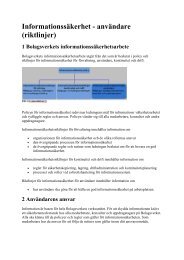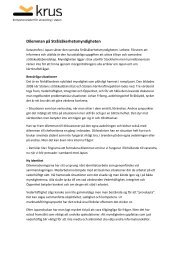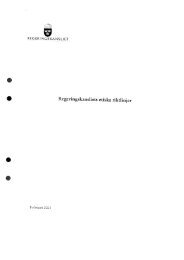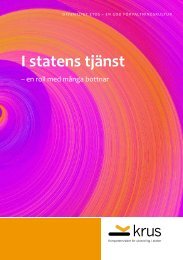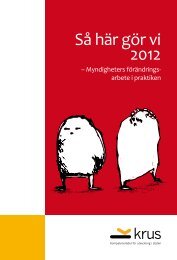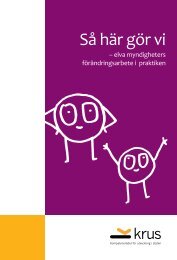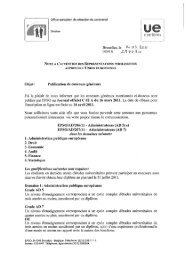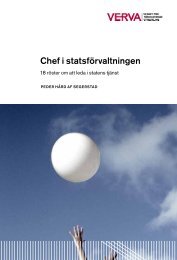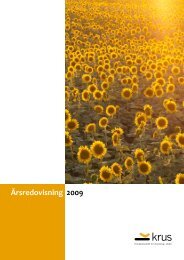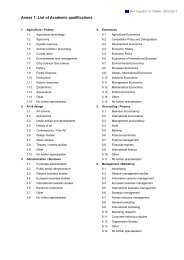Dialogkompetens i skolans vardag - Publikationer - LTU - Luleå ...
Dialogkompetens i skolans vardag - Publikationer - LTU - Luleå ...
Dialogkompetens i skolans vardag - Publikationer - LTU - Luleå ...
You also want an ePaper? Increase the reach of your titles
YUMPU automatically turns print PDFs into web optimized ePapers that Google loves.
12 A.-C. Wennergren<br />
user. Without reducing the user’s responsibility for listening strategies, the<br />
pupils’ statements reveal a gap of knowledge caused by a lack of communication.<br />
Pupils made distinctions between background noise and background sound<br />
and the differences in this context are important and have to be clarified.<br />
They described noises as disturbing factors emanating from, for example,<br />
printers, fans, furniture or too much movement in the room. The background<br />
sound they actually ask for, on the other hand, is more about an awareness of<br />
persons, for example whether there are other peers in the room or if other<br />
peers are talking in the classroom. This might be seen as a paradox having a<br />
need for silence but at the same time asking for technical equipment that does<br />
not eliminate the background sound. However, the importance of getting<br />
the feeling of being present is something that demands to be taken seriously.<br />
As described by Gullacksen (2002), empowerment and coping strategies are<br />
connected to increased opportunities for participation.<br />
Pupils choose rooms other than the classroom for several reasons, a fact<br />
which reveals that they like to use their hearing aids in a varied way. Although<br />
it is not the same as not needing the hearing loop at all, the task only related<br />
to a conversation with three other peers. In large groups where information or<br />
presentations are given via one-way communication, use of the hearing loop<br />
would provide a more relaxed listening situation.<br />
Visual Support<br />
Pupils of all ages describe the need for visual support. It is also the category<br />
where it is possible to find broadly similar explanations in several of the age<br />
categories: A seven-year old boy writes, for example, that ‘‘the choice is a<br />
round table to make sure that everybody can see each other for lip-reading’’<br />
whilst a sixteen-year old boy writes that ‘‘thanks to this round table<br />
everybody can have an optimal listening and visual situation’’.<br />
According to the pictures there is a heightened consciousness about how to<br />
sit in order to achieve optimal visualisation. For a hard-of-hearing person it is<br />
important to use other senses in listening situations and her/his ability to see<br />
the speaker and use lip-reading skills is sometimes an invaluable support<br />
(Arlinger 1999, Gullacksen 2002). Nowadays, after a period of changes, the<br />
group speech situation in many classrooms is to sit around a big table. When<br />
the round table is the choice for the task, it often includes a recommendation<br />
for pupils to sit as closely to one another as possible. In the drawings one can<br />
find four persons at one end of the table. There are also comments about how<br />
to sit in order to see one another:<br />
We will sit straight-backed so as to be able to see one another (girl, 9).<br />
The best is to sit close // it is possible to come closer to the eyes of my classmates<br />
(boy, 10).<br />
When using an ordinary table, the choice is to sit in two pairs opposite<br />
one another. ‘‘For the best listening we have to sit opposite one another’’



